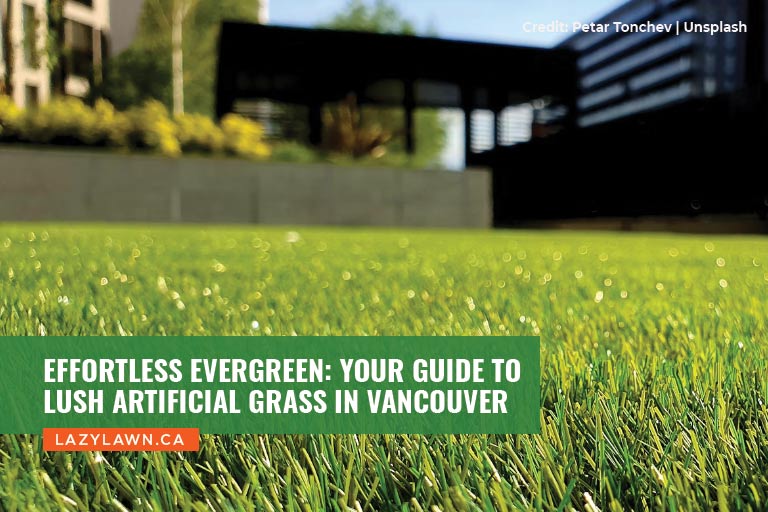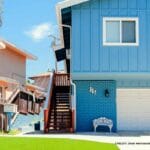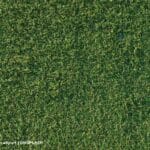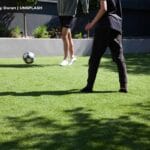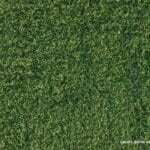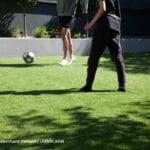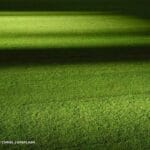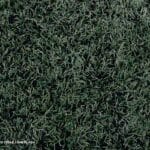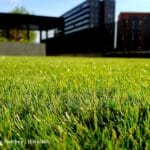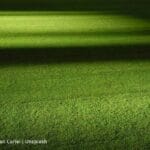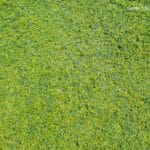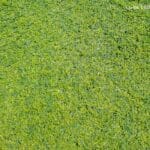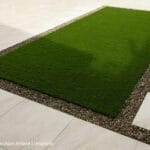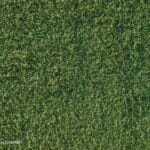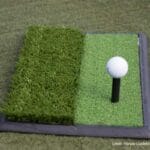Vancouver’s climate, with its rainy winters and temperate summers, creates unique challenges for homeowners seeking a vibrant lawn year-round. Artificial grass has become a popular solution, offering a low-maintenance, water-wise alternative to natural turf. Yet, even the most resilient artificial grass requires some TLC to maintain its pristine appearance.
While artificial grass demands less attention than natural lawns, it’s not entirely maintenance-free. Vancouver’s unique climate, characterized by rainy winters and temperate summers, presents specific challenges that necessitate a tailored approach to artificial grass maintenance. This comprehensive guide will empower you with the knowledge and techniques to overcome common obstacles and keep your artificial lawn looking its best all-year round.
Common Challenges and Their Remedies
While artificial grass demands significantly less attention than natural turf,
it’s not entirely immune to challenges that can affect its aesthetics and longevity. Understanding these potential hurdles allows you to proactively address them:
- Weed Infiltration: While artificial grass itself doesn’t grow, pesky weeds can sprout through the infill or creep in from the edges. Regular inspection and swift removal are key to preventing these unwelcome guests from establishing a foothold.
- Moss and Algae Invasion: Vancouver’s damp climate can create a breeding ground for moss and algae, particularly in shaded areas. Preventive measures such as adequate drainage and ample sunlight exposure are crucial, coupled with occasional treatments if necessary.
- Fading and Discoloration: Prolonged exposure to the sun’s rays can cause some artificial grass fibres to fade over time. Opting for high-quality, UV-resistant grass and considering shade solutions for sun-drenched areas can help preserve the vibrant hues.
- Matting and Flattening: High-traffic zones can lead to the matting or flattening of grass blades. Regular brushing against the grain restores their upright position and natural appearance.
- Pet Waste and Stains: Artificial grass is designed to be pet-friendly, but prompt cleanup of pet waste is essential to avoid lingering odours and unsightly stains. A quick rinse with water and a mild detergent is usually sufficient.
- Drainage Dilemmas: Inadequate drainage can result in waterlogged turf, damaging the base material and fostering moss growth. Ensuring proper installation with effective drainage solutions is paramount for long-term performance.
- Debris Accumulation: Leaves, twigs, and other debris can accumulate on artificial grass, impeding drainage and detracting from its visual appeal. Regular removal using a leaf blower or broom is recommended.
Seasonal Maintenance Strategies

Vancouver’s distinct seasons call for specific maintenance strategies to ensure your artificial grass thrives throughout the year:
Spring:
- Deep Cleansing: After the winter months, a thorough cleaning is in order. Remove accumulated debris, address any lingering moss or algae, and give the grass a good rinse to wash away winter grime.
- Inspection and Repair: Check for any signs of damage or wear and tear, such as loose seams or flattened areas. Promptly address these issues to prevent them from escalating.
- Weed Eradication: Inspect for weed growth and promptly remove any unwanted plants that have emerged.
Summer:
- Hydration and Cooling: During scorching summer days, lightly water the grass to cool it down and prevent heat buildup. This can also help minimize static electricity.
- Stain Removal: Tackle any stains as soon as possible, particularly those caused by spills or pet waste. Use a mild detergent and water for cleaning.
- Regular Brushing: Maintain the upright position of the fibres and prevent matting by brushing against the grain regularly.
Autumn:
- Leaf Clearance: As the leaves start to fall, remove them regularly to prevent them from blocking drainage and creating a damp environment conducive to moss growth.
- Drainage Inspection: Ensure that drainage systems are functioning optimally to handle increased rainfall. Clear any blockages in gutters or drains.
Winter:
- Snow Removal: If snow blankets your lawn, gently remove it with a plastic shovel or broom to prevent it from compacting and damaging the grass.
- Traffic Control: Minimize foot traffic on the grass when it’s wet or icy to avoid damage.
- Maintenance Vigilance: Periodically inspect for any signs of wear and tear and address them promptly.
Year-Round Maintenance Essentials
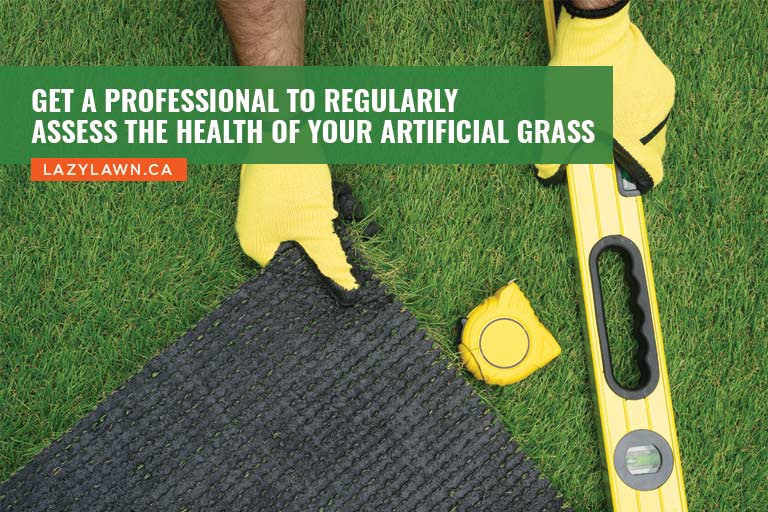
Beyond seasonal care, certain maintenance tasks are essential year-round to ensure the longevity and beauty of your artificial grass:
- Consistent Brushing: Regular brushing against the natural direction of the grass blades helps prevent them from matting or flattening, especially in high-traffic areas. A quick brush once a week is usually sufficient to keep your lawn looking its best.
- Diligent Debris Removal: Regularly remove leaves, twigs, and other debris using a leaf blower or broom. Accumulated debris can not only make your lawn look untidy but also block drainage and contribute to moisture buildup, creating a breeding ground for moss and algae.
- Proactive Weed Control: Regularly inspect your artificial lawn for any signs of weed growth and take immediate action to remove them before they have a chance to establish deep roots. A simple hand-weeding session or a natural herbicide can be effective.
- Timely Stain Treatment: Address spills and stains as soon as they occur to prevent them from setting in. A mixture of mild detergent and water is usually enough to tackle most stains. Avoid harsh chemicals that could damage the grass fibres.
- Immediate Pet Waste Cleanup: Promptly remove solid pet waste and rinse the area thoroughly with water to eliminate odours and prevent discoloration. For stubborn stains or odours, a specialized artificial grass cleaner may be necessary.
- Drainage Vigilance: Regularly check your lawn’s drainage system, especially after heavy rainfall, to ensure water flows freely and doesn’t pool on the surface. Clear any obstructions in drainage channels or gutters to prevent waterlogging and potential damage.
- Infill Replenishment: If your artificial grass utilizes infill, monitor its level and replenish it as needed. Infill provides cushioning, support, and helps maintain the upright position of the grass blades. Refer to the manufacturer’s recommendations for the appropriate infill type and replenishment schedule.
- Professional Assessment: While regular DIY maintenance is essential, it’s wise to schedule a professional inspection annually. A trained eye can detect subtle signs of wear and tear or potential problems that you might overlook, allowing for timely intervention and preventing costly repairs down the line.
By following these comprehensive maintenance tips and addressing challenges promptly, you can ensure that your artificial grass lawn remains a lush and vibrant oasis throughout the year, regardless of Vancouver’s dynamic weather patterns. With proper care, your investment will continue to provide enjoyment and enhance the curb appeal of your home for years to come.
If you’re seeking professional guidance or assistance with artificial grass installation or maintenance, Lazy Lawn Canada is a trusted resource. Our expertise can help you achieve and maintain the perfect lawn for your Vancouver home. Contact us at 1-888-622-5296 to explore our services and embark on a journey towards a carefree lawn experience.

